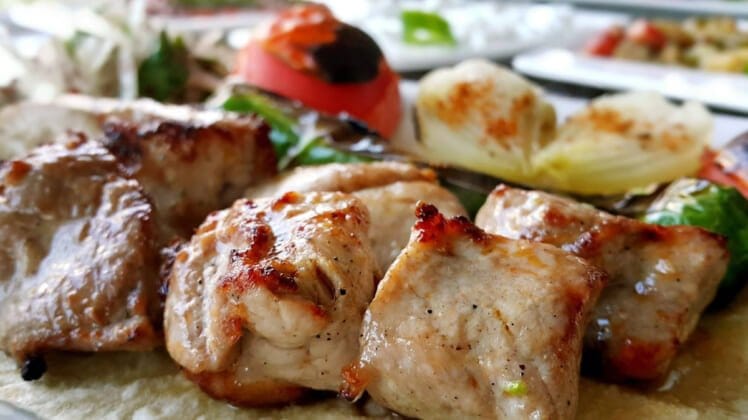
Turkish cuisine originated in Asian settlements, long before the country we now know as Turkey was formed. History says that Turkey was created in the 11th century, as Seljuk Turks, who were part of a dynasty that ruled regions of Asia and the Middle East migrated onto the land. Others believe that Turkey was formed when the Ottomans reunited its people after the Mongol invasion, during the 13th century.
Either way, we know that from the 11th century, Turkish cuisine was molded by its position, both geographically and in terms of power. Turkey, which straddles both the Anatolian and Balkan peninsulas, meant the migrating Turks had new ingredients, including herbs from the highlands, and olives from the west. It was during this period of fusion that the foundation of Turkish cuisine was born, with its use of meat, dairy, vegetables, and grains. Along with newly attained cooking methods like stuffing vegetables, and the use of skewers to grill meat over open fires. As Turkey took shape, more fruits, vegetables, and fish, native to the region were introduced to its growing cuisine.
CHECK OUT: What makes Italian cuisine the world’s most popular?
Perfecting Turkish Cuisine
During the rule of the Ottoman Empire, which began in 1299 and ended in 1922, an Imperial Kitchen was established in Topkapı Palace, Istanbul. The Imperial Kitchen covered several buildings and housed over a thousand staff, including many hundreds of chefs who were specialists in certain dishes. It was during this period that new dishes were created through experimentation and often perfected over time. Their aim was to create new culinary sensations for Ottoman royalty. These creations would then filter down to the people during events such as Ramadan. This tradition was carried forwards into Southern Russia, and Northern Africa.
This focus on food meant Turkey became the main hub between Europe and Asia along the Silk Road, an ancient trade network that lasted 130 BCE to 1453 CE (Common Era), and connected regions from across the world in commerce. It’s through this fusion of ingredients and dedication to cooking mastery that Turkish cuisine is not to be missed.
CHECK OUT: Belgium’s cuisine is far more than waffles and chocolates. It’s fries, beers, and mussels too.
Favorite Traditional Dishes
Menemen: A traditional Turkish breakfast consisting of eggs, tomato, and green peppers, cooked in olive oil with white cheese. It is served with pide, a Turkish flatbread.
Dolma: A stuffed or rolled vegetable filled with grains, ground meat, other vegetables, and rice. Stuffed vegetables could include peppers or tomatoes. Rolled vegetables include cabbage or eggplant.
CHECK OUT: Malaysian Cuisine, the ultimate in hot and spicy.
Baklava: A sweet dish made from layers of filo pastry, filled with chopped nuts and sweetened with syrups, frosting, or honey. The dish was historically served by Sultans every 15th of the month in a ceremony called Baklava Alayı.
Turkey shares a border with Bulgaria, Syria, Iraq, Iran, Azerbaijan, and Georgia.
